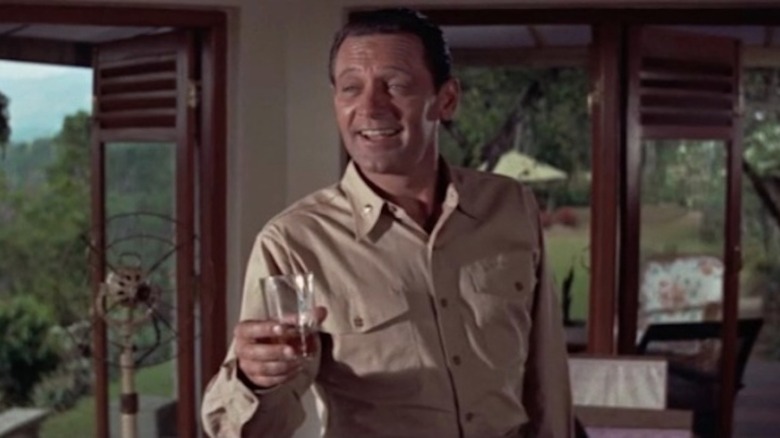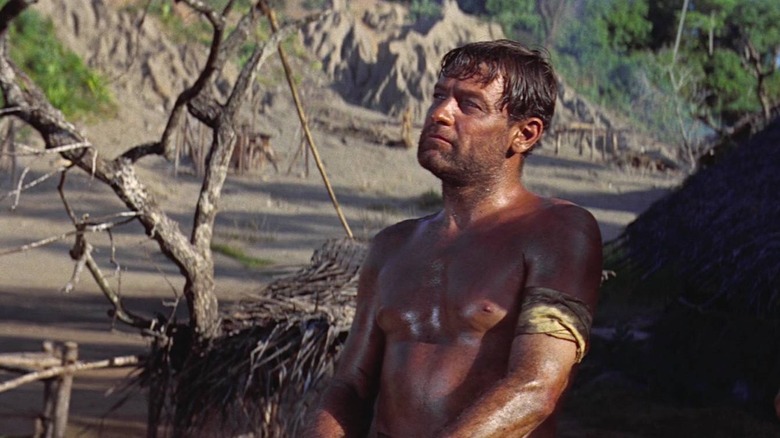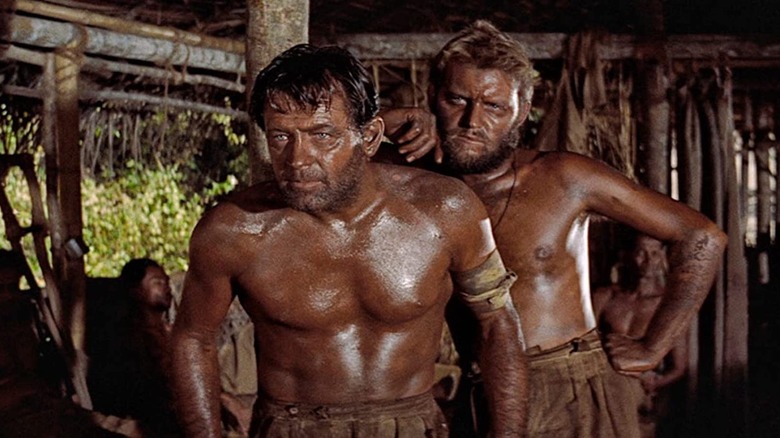How The Bridge On The River Kwai Set A New Standard For Actors' Pay
In the highly unlikely event that you become a major Hollywood player (if that even means anything anymore), keep this in mind: net points are for saps. Studio accounting is basically rigged to ensure that blockbusters almost never turn a significant profit. This is because lowly creatives like screenwriters and the authors who wrote the material on which the movie is based would have to get paid, which is anathema to executives.
If you want to get seriously wealthy in the film biz, get your agent to negotiate for gross points. Get that first-dollar windfall before exhibitors and what-have-you get their cut. That's funny money. And that gravy train got chugging down the track but good in 1957 when William Holden and his representation recognized his value to David Lean's big-screen adaptation of Pierre Boulle's World War II novel "The Bridge on the River Kwai."
Holden has Columbia over a barrel
Had Lean's film, scripted by blacklisted writers Carl Foreman and Michael Wilson (but credited to Boulle), been entirely faithful to Boulle's novel, the commando character of Shears would've gone to a British actor. But the producers, keen on attracting U.S. moviegoers, demanded that Shears be written as an American. Hence the casting of Holden.
While "The Bridge on the River Kwai" is an indisputable classic, it does falter for a brief moment to give mainstream viewers a half-hearted romantic subplot involving Holden's Shears and a nurse played by Ann Sears (because the studio was concerned that women wouldn't turn out for an all-dude war movie). For the most part, the film belongs to Alec Guinness' interned Lieutenant Colonel Nicholson and Sessue Hayakawa's Colonel Saito. It's the former's addled dedication to the construction of the bridge that drives the narrative. Once Shears is recruited to destroy the bridge, the film regains its momentum and builds to its mad finale.
William Holden becomes a millionaire
The studio believed Lean needed Holden, and paid the actor handsomely for his contribution to a film that wound up winning seven Academy Awards, including Best Picture. How much? According to a 1958 Hollywood Reporter story, an unprecedented 10 percent of the gross. For a film that raked in $33 million at the U.S. box office, that's a tidy $3 million and change in an era where being a millionaire was extraordinarily rare.
In the years to come, stars like Jack Nicholson, Bruce Willis and Will Smith would take a much heftier cut of the first-dollar global gross. If the money was there for the taking, why not? Nowadays, stars are less integral to the success of theatrical releases (because, in part, there are fewer theatrical releases), but they can still slice off a lucrative piece of that gross pie. And they have William Holden to thank for that.


